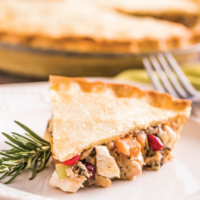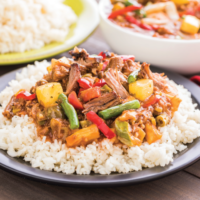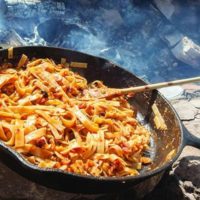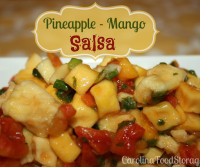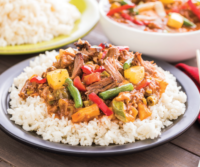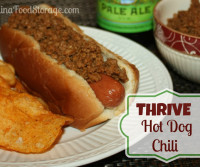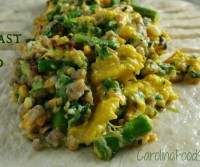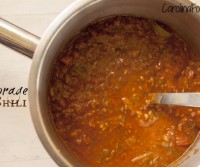Food Storage “FAQ”
What are the countries of origin for THRIVE foods?
What are the dates on the bottom of the cans?
Does Thrive Life have an organic line of THRIVE foods?
How long should I store my water in a water container?
Can families with allergies and special dietary needs eat THRIVE foods safely?
What are the best methods for rehydrating THRIVE foods?>
Are THRIVE foods ripened naturally in the field or picked green and artificially ripened?
What can sizes can I store and rotate in the Thrive Life Food Rotation Systems (FRS Units)?
Does Thrive Life accept food stamps?
Are THRIVE foods injected with chemicals as part of the freeze drying process?
What if I buy a system that doesn’t fit in my space?
Are THRIVE meats hormone and antibiotic free?
What is the minimum budget amount for the Q?
Is Thrive Life’s facility USDA and FDA approved?
What type of milk is used in THRIVE cheeses?
Where do THRIVE fruits and vegetables come from?
Does Thrive Life offer recipes for THRIVE gluten-free products?
Are Thrive Life meat products radiated across state lines?
How does one get the water out of a 30 or 55 gallon container?
Will glass jars or water bottles rotate in FRS units?
Can I change my FRS track configuration?
How do I adjust the tracks to fit different cans?
What are the countries of origin for THRIVE foods?
We are proud to say that a majority of THRIVE foods originate in the US, though we also source foods from other countries depending on season, availability, and other factors in the food industry, as do most grocery stores. However, we do not source any THRIVE products from China, and all our products go through a rigorous quality assurance process and are rejected if they do not meet our high standards. For information on the country of origin of any THRIVE product, please see your consultant or a customer service representative.
What are the dates on the bottom of the cans?
The dates printed on the bottom of the cans are the dates that the product was canned. To find out how long the product will last (shelf life), see the individual product page for a complete shelf life list on all THRIVE products.
What is the difference between freeze drying and dehydration, and the nutritional impact on the final product? Why are some THRIVE products dehydrated rather than freeze dried?
Freeze drying is a process where frozen products are placed in a refrigerated vacuum system and, without thawing, are dehydrated. Minimal heat (just over 100 degrees F) is used during this process. This ensures that the cell structure of the food remains intact, allowing it to retain the color, shape, flavor, and nutritional value of the original product better than other drying methods. Dehydration is a simpler, more common process and is usually achieved through air drying. We dehydrate some THRIVE foods, like carrots and sweet potatoes, because they are preserved better through dehydration than freeze drying. Because of the complexity of the freeze drying process, freeze dried products are typically more expensive than dehydrated products.
Does Thrive Life have an organic line of THRIVE foods?
We do offer some certified organic foods at this time. The USDA is in charge of the National Organic Program that certifies our organic foods. Organic is a labeling term that indicates that the food or other agricultural product has been produced through approved methods. More foods may be added to our organic line in the future.
How long should I store my water in a water container?
We recommend rotating water storage yearly.
Are all THRIVE gluten-free products certified? Who certifies them and what is the certification process?
All THRIVE gluten-free products that have completed certification now have the “Certified Gluten-Free” symbol on the label. Though gluten-free certification is not currently regulated by a government agency, we use a third party organization known as the gluten-free standard in the industry. Our certification assures that every gluten-free product is tested during production. All our gluten-free products are completely separated from other THRIVE products; we use a seperate gluten-free room, different clothing, different cleaning materials, and different machinery to ensure that there is no trace of gluten in our certified gluten-free products.
Can families with allergies and special dietary needs eat THRIVE foods safely?
Many THRIVE foods are naturally free from common food allergens. For information on each food, please consult individual product pages. Please note that our allergen-free foods are processed in the same facility as foods that contain gluten, dairy, soy, nuts, and other food allergens. Our machinery, tools, tables, and workspaces are thoroughly cleaned and sterilized before each new production run. However, in the interest of the safety of those who have serious food sensitivities, Thrive Life and THRIVE cannot guarantee that trace amounts of allergens will not be present
How are THRIVE powdered products (eggs, shortening, etc.) made? What is the main differences between the Instant and Powdered milk?
THRIVE powders are made through a process called spray drying. Spray drying preserves shelf life by converting perishable liquid products into long-lasting dry powders. The main differences between THRIVE Powdered and Instant Milk is that Instant Milk goes through a process to make it instant and is fortified with vitamins A and D to give it a fresh milk taste, both of which make it great for drinking. Powdered Milk was developed for cooking and takes more time to dilute correctly, so it does not have as smooth of a texture when reconstituted. Both powders, however, may be used for either drinking or cooking.
What are the best methods for rehydrating THRIVE foods?
Fruits and vegetables are the quickest to reconstitute and will require 100% of their volume in water. Allow the product to soak until the water has reconstituted it to its original state and drain off any excess liquid. Cheeses need to be stirred as water is drizzled evenly over them, and best results come after 3–4 hours of refrigeration for the water to fully reconstitute the cheese. Meats can be rehydrated by adding 100% of their volume in water and generally take longer to reconstitute than fruits and vegetables. Please see specific product pages on our website for rehydration instructions for particular products. After rehydrating, THRIVE foods have similar flavor and texture as fresh foods, and they will cook the same as fresh foods. THRIVE foods may be added dry during the cooking process if there is enough liquid in the recipe for rehydration to occur.
Are THRIVE foods ripened naturally in the field or picked green and artificially ripened?
Most grocery store produce is picked before it is fully ripe, and then ripens during transportation, in the store, or on our countertops at home. THRIVE freeze dried fruits and vegetables are allowed to ripen naturally in the field and are picked at the peak of freshness. They are then washed thoroughly and Individually Quick Frozen (meaning the individual pieces are frozen separately rather than in clumps) the same day they are picked, and within 2 to 3 hours in most cases. This is how THRIVE foods maintain their fresh taste and flavor through the freeze drying process.
What can sizes can I store and rotate in the Thrive Life Food Rotation Systems (FRS Units)?
We have three track sizes that will store and rotate almost any can. Small tracks will hold cans like tuna, soup, and vegetable cans (up to 17 cans in each track). Medium tracks will hold medium-sized cans like chunk chicken and large fruit cans (up to 11 cans in each track). Medium tracks will also hold small cans. Large tracks will hold cans of all sizes, from small to gallon-sized (#10) cans. When you choose your system, select the proper configuration and number of tracks that will work for the cans you plan to store and rotate.
Does Thrive Life accept food stamps?
No. Thrive Life accepts all major credit cards as well as cash, checks, and money orders.
Are THRIVE foods injected with chemicals as part of the freeze drying process?
There are no chemicals whatsoever injected into THRIVE foods during the freeze drying process or at any other time.
What if I buy a system that doesn’t fit in my space?
Thrive Life has several units and options that will accommodate most needs and living spaces. If you receive a unit that does not work, you may exchange your unit for a more suitable match. There are no penalty charges associated with any exchange; however, you will need to pay all shipping charges and any difference in price associated with your exchange. If you would like to exchange your unit, please fill out the following Returns & Exchange Form and include it in the box you return the unit in: http://www.carolinafoodstoragethrivelife.com/files/Return.pdf
Please call the corporate office toll-free at 877-743-5373 with any questions or concerns you may have.
Are THRIVE products Kosher?
Our products are not Kosher at this time. While many of our products were Kosher at one point, our facility is not Kosher certified and we cannot declare them as such.
Are THRIVE meats hormone and antibiotic free?
Because all plants and animals produce natural hormones, a “hormone-free” claim cannot be made. However, no additional hormones are used in the raising of animals for our meat products, or in the subsequent processing and production of our meat products. The animals used for THRIVE meat products are treated with antibiotics as necessary for the health of the animal.
What is the minimum budget amount for the Q?
There is no built in budget requirement in the Q. However, the budget needs to be set high enough so that you can receive the product you have selected.
Is Thrive Life’s facility USDA and FDA approved?
Yes. We have USDA inspectors on site four days a week and establishment numbers for meat production. We are included in the inspection program for the Utah Department of Agriculture, which falls under the FDA. We also have a third party audit yearly to ensure that we are in conformance to all government regulations regarding food.
What are our cans made from?
Our cans are made from steel and coated with a food grade coating designed to keep rust from forming.
What type of milk is used in THRIVE cheeses?
Our Mozzarella cheese is made from skim milk. Our Cheddar, Monterey Jack, and Colby cheeses are made from whole milk.
Where do THRIVE fruits and vegetables come from?
Our products are all processed and packaged in the US under FDA and USDA regulation.
Does Thrive Life offer recipes for THRIVE gluten-free products?
As a certified gluten-free plant, we are striving to accommodate the growing allergen to gluten. We are currently in the process of making gluten-free versions of current recipes and producing exclusive gluten-free recipes that will be available to all of our customers. Increasing the gluten-free options provided by THRIVE is one of our top priorities, and we are committed to helping you use gluten-free THRIVE products every day.
Are Thrive Life meat products radiated across state lines?
No, none of our products are irradiated.
How does one get the water out of a 30 or 55 gallon container?
A siphon hose can be used to get water out. Siphon hoses screw to the cap at the top of the barrel and use a simple hand pump to siphon the water into the hose.
Will glass jars or water bottles rotate in FRS units?
Our rotation systems do not currently support glass jars or water bottles. We do, however, offer side shelves that attach easily to our FRS units. Our side shelves offer an excellent way to maximize your storage. They are also sturdy and easy to attach.
Can I change my FRS track configuration?
Yes! Thrive Life tracks are adjustable and interchangeable. Tracks can be exchanged for a small fee and additional tracks can also be purchased. See: http://www.carolinafoodstorage.thrivelife.com/all-products/frs-food-rotation-systems/accessories.html/ To customize your order, please contact a Thrive Life representative by calling 877-743-5373. To change the track configuration on an order that has already been placed, please print out an exchange form at: http://carolinafoodstorage.thrivelife.com/files/Return.pdf Please send send the completed exchange form with the item you’d like to exchange. We’ll call you to confirm your exchange upon receipt of your package.
How do I adjust the tracks to fit different cans?
Can tracks are easy to adjust. Simply unclip the track braces (or straps) and move the tracks as needed. When you have reached your desired width, clip the tracks back into place. Once complete, test this adjustment by loading a can and watching it roll. A successful fit allows an undamaged can to roll freely and easily from the back to the draw slot.
